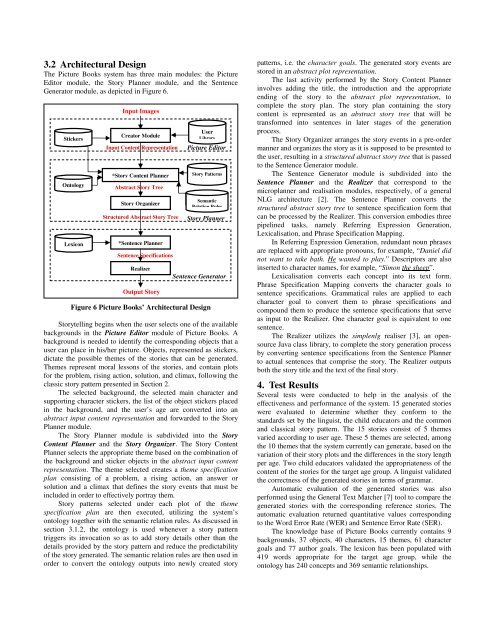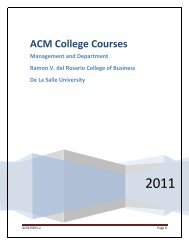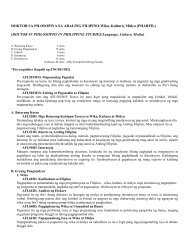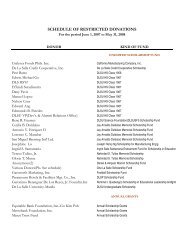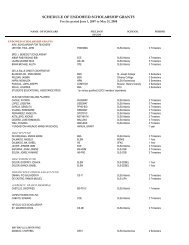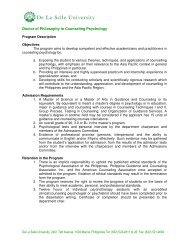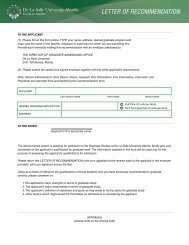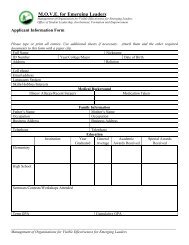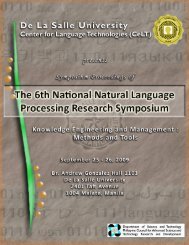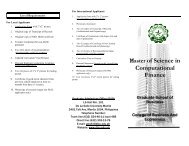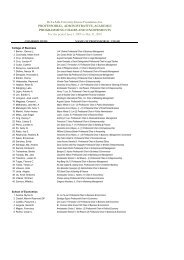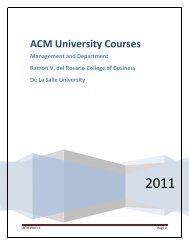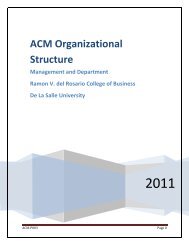Picture Books: An Automated Story Generator - De La Salle University
Picture Books: An Automated Story Generator - De La Salle University
Picture Books: An Automated Story Generator - De La Salle University
Create successful ePaper yourself
Turn your PDF publications into a flip-book with our unique Google optimized e-Paper software.
3.2 Architectural <strong>De</strong>signThe <strong>Picture</strong> <strong>Books</strong> system has three main modules: the <strong>Picture</strong>Editor module, the <strong>Story</strong> Planner module, and the Sentence<strong>Generator</strong> module, as depicted in Figure 6.StickersOntologyLexiconInput ImagesCreator ModuleInput Content Representation*<strong>Story</strong> Content PlannerAbstract <strong>Story</strong> Tree<strong>Story</strong> OrganizerStructured Abstract <strong>Story</strong> Tree*Sentence PlannerSentence SpecificationsRealizerOutput <strong>Story</strong>UserLibrary<strong>Picture</strong> EditorModule<strong>Story</strong> PatternsSemanticRelation Rules<strong>Story</strong> PlannerSentence <strong>Generator</strong>ModuleFigure 6 <strong>Picture</strong> <strong>Books</strong>’ Architectural <strong>De</strong>sign<strong>Story</strong>telling begins when the user selects one of the availablebackgrounds in the <strong>Picture</strong> Editor module of <strong>Picture</strong> <strong>Books</strong>. Abackground is needed to identify the corresponding objects that auser can place in his/her picture. Objects, represented as stickers,dictate the possible themes of the stories that can be generated.Themes represent moral lessons of the stories, and contain plotsfor the problem, rising action, solution, and climax, following theclassic story pattern presented in Section 2.The selected background, the selected main character andsupporting character stickers, the list of the object stickers placedin the background, and the user’s age are converted into anabstract input content representation and forwarded to the <strong>Story</strong>Planner module.The <strong>Story</strong> Planner module is subdivided into the <strong>Story</strong>Content Planner and the <strong>Story</strong> Organizer. The <strong>Story</strong> ContentPlanner selects the appropriate theme based on the combination ofthe background and sticker objects in the abstract input contentrepresentation. The theme selected creates a theme specificationplan consisting of a problem, a rising action, an answer orsolution and a climax that defines the story events that must beincluded in order to effectively portray them.<strong>Story</strong> patterns selected under each plot of the themespecification plan are then executed, utilizing the system’sontology together with the semantic relation rules. As discussed insection 3.1.2, the ontology is used whenever a story patterntriggers its invocation so as to add story details other than thedetails provided by the story pattern and reduce the predictabilityof the story generated. The semantic relation rules are then used inorder to convert the ontology outputs into newly created storypatterns, i.e. the character goals. The generated story events arestored in an abstract plot representation.The last activity performed by the <strong>Story</strong> Content Plannerinvolves adding the title, the introduction and the appropriateending of the story to the abstract plot representation, tocomplete the story plan. The story plan containing the storycontent is represented as an abstract story tree that will betransformed into sentences in later stages of the generationprocess.The <strong>Story</strong> Organizer arranges the story events in a pre-ordermanner and organizes the story as it is supposed to be presented tothe user, resulting in a structured abstract story tree that is passedto the Sentence <strong>Generator</strong> module.The Sentence <strong>Generator</strong> module is subdivided into theSentence Planner and the Realizer that correspond to themicroplanner and realisation modules, respectively, of a generalNLG architecture [2]. The Sentence Planner converts thestructured abstract story tree to sentence specification form thatcan be processed by the Realizer. This conversion embodies threepipelined tasks, namely Referring Expression Generation,Lexicalisation, and Phrase Specification Mapping.In Referring Expression Generation, redundant noun phrasesare replaced with appropriate pronouns, for example, “Daniel didnot want to take bath. He wanted to play.” <strong>De</strong>scriptors are alsoinserted to character names, for example, “Simon the sheep”.Lexicalisation converts each concept into its text form.Phrase Specification Mapping converts the character goals tosentence specifications. Grammatical rules are applied to eachcharacter goal to convert them to phrase specifications andcompound them to produce the sentence specifications that serveas input to the Realizer. One character goal is equivalent to onesentence.The Realizer utilizes the simplenlg realiser [3], an opensourceJava class library, to complete the story generation processby converting sentence specifications from the Sentence Plannerto actual sentences that comprise the story. The Realizer outputsboth the story title and the text of the final story.4. Test ResultsSeveral tests were conducted to help in the analysis of theeffectiveness and performance of the system. 15 generated storieswere evaluated to determine whether they conform to thestandards set by the linguist, the child educators and the commonand classical story pattern. The 15 stories consist of 5 themesvaried according to user age. These 5 themes are selected, amongthe 10 themes that the system currently can generate, based on thevariation of their story plots and the differences in the story lengthper age. Two child educators validated the appropriateness of thecontent of the stories for the target age group. A linguist validatedthe correctness of the generated stories in terms of grammar.Automatic evaluation of the generated stories was alsoperformed using the General Text Matcher [7] tool to compare thegenerated stories with the corresponding reference stories. Theautomatic evaluation returned quantitative values correspondingto the Word Error Rate (WER) and Sentence Error Rate (SER).The knowledge base of <strong>Picture</strong> <strong>Books</strong> currently contains 9backgrounds, 37 objects, 40 characters, 15 themes, 61 charactergoals and 77 author goals. The lexicon has been populated with419 words appropriate for the target age group, while theontology has 240 concepts and 369 semantic relationships.


